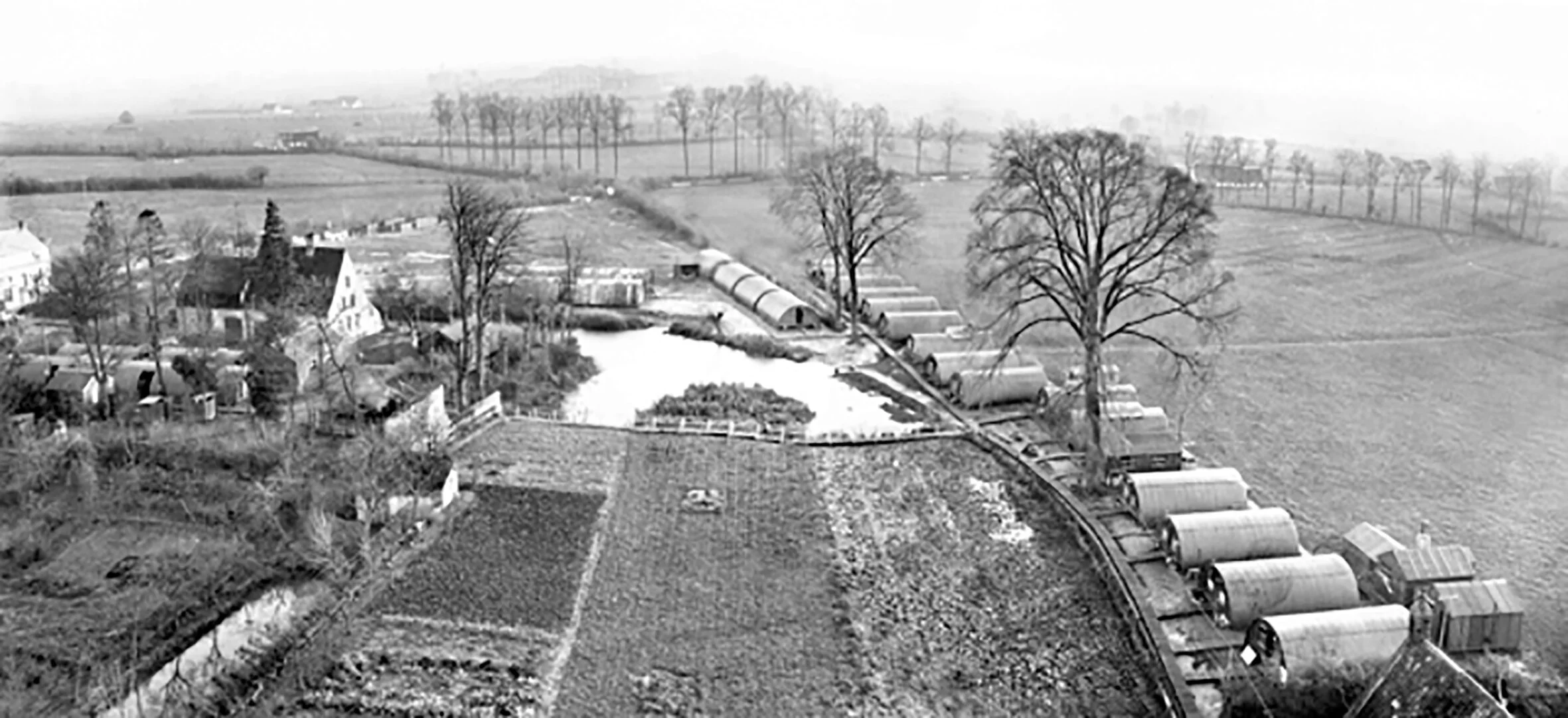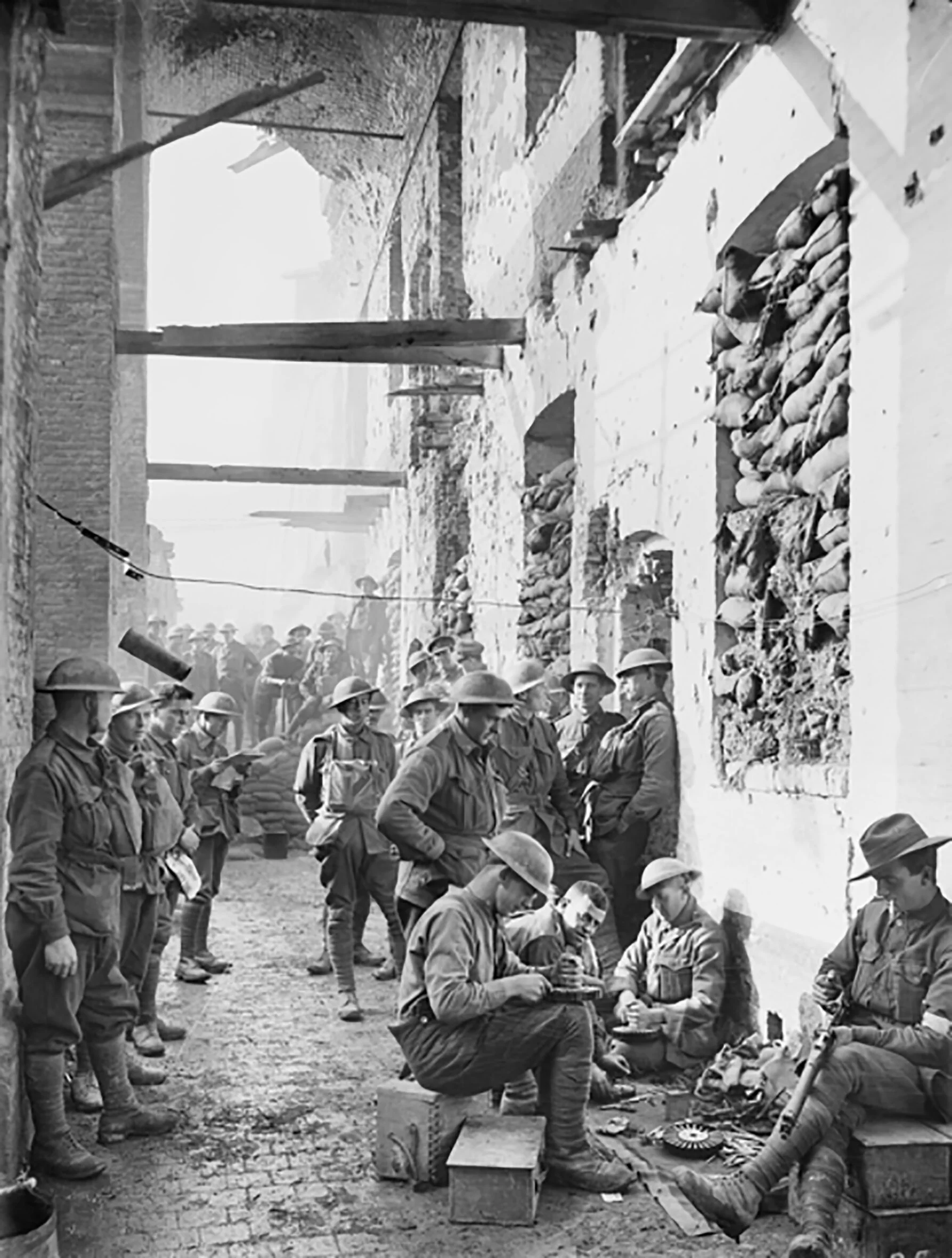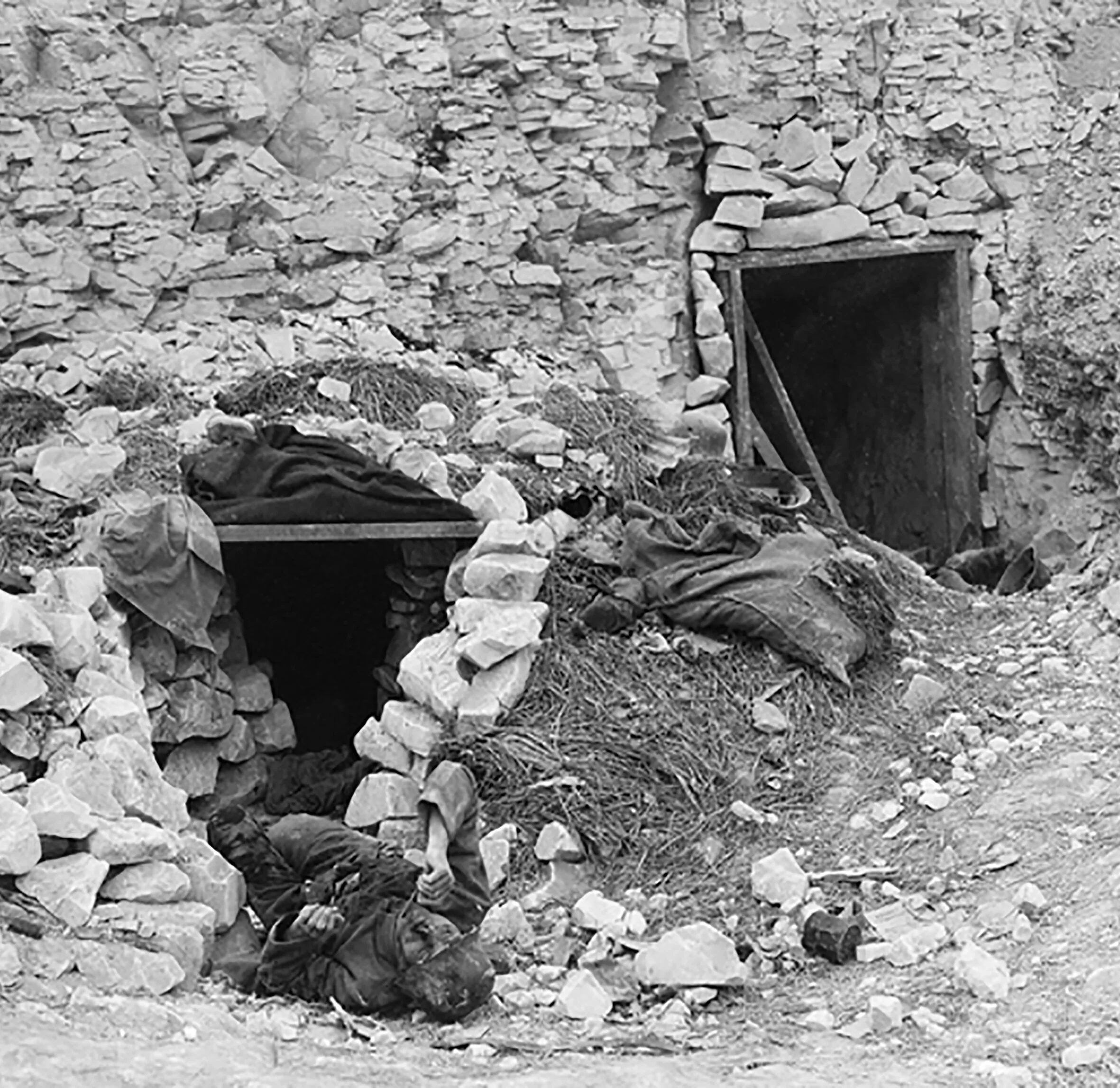The Great War 1916-1918
It was typical of Wilkins to get close to the front lines. Behind these soldiers, the smoke at the rear of this image is the front where fighting is happening.
By the time George Hubert Wilkins had extracted himself from the ill-fated Canadian Arctic Expedition, the Great War had been going for nearly two years. But his growing reputation with a camera secured him a role working for famous war-historian, Charles Bean.
The Menin Road turned up many confronting images, few more than this. The loss of horses was often especially felt by their carers.
Wilkins often reprised his daring first ever flight over enemy lines in the Balkan War in France and Belgium. Here he heads over Nissen huts towards the front.
No other country sent photographers to the front like Bean and Australia did and so the work of Wilkins, and others like him, notably Frank Hurley, stands out as a record of the often appalling circumstances under which soldiers fought, the rotten hand they had been dealt and life behind the lines.
Soldiers at rest behind the lines enjoy whatever comfort and release they can find.
A dead German soldier lies before a tunnel captured by the Australian forces.
How Wilkins survived is as much a mystery as to why he placed himself in such vulnerable positions, eventually earning the moniker ‘that mad photographer’ from the Germans.
The futility of war is summed up these Australian soldiers attempting to advance this cannon through the mud.
A gunner uses a ruler to exemplify the size of this captured gun from the Germans.
Immediately after the Armistice, Wilkins joined Bean in returning to Gallipoli but the sun there did nothing more than shine a light on the poignancy and futility of that campaign.
More captured loot – this time Australian soldiers enjoy cigars and other home comforts after capturing a German trench.
Wilkins excelled at capturing irony – here a soldier commends those he has just buried to the Lord while standing before a ruined building no God should ever have allowed to be destroyed.
All images courtesy of the Byrd Polar & Climate Research Centre at Ohio State University.








